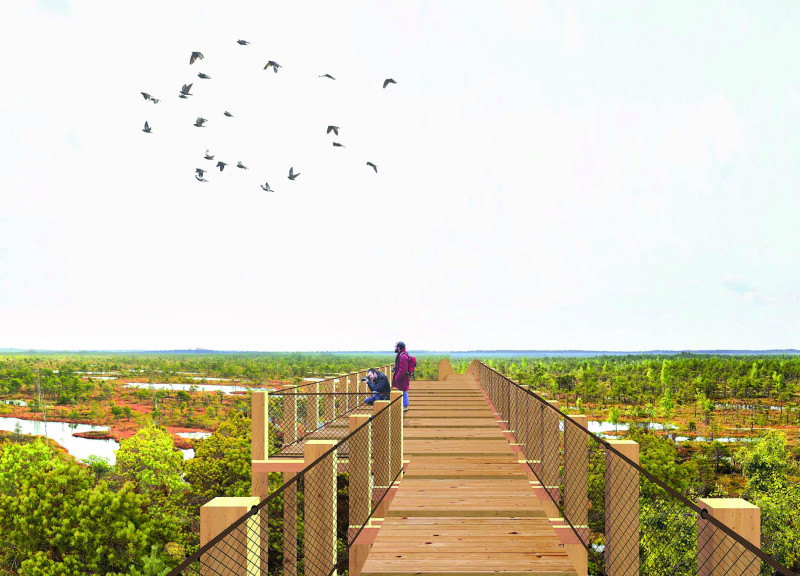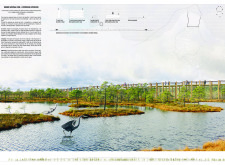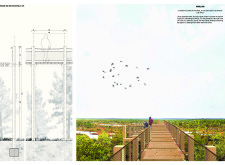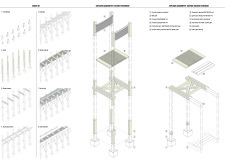5 key facts about this project
## Overview
The footbridge extension at Kemeri National Park, situated in Latvia, aims to improve visitor accessibility and engagement within this ecologically sensitive environment. The project enhances existing pathways while fostering a connection between visitors and the natural landscape. The design prioritizes functionality and minimal impact, ensuring the enhancement of visitor experience without compromising the integrity of the park's environment.
## Design Principles
### Sustainability and Accessibility
The design integrates two foundational principles: sustainability and accessibility. It establishes a connection with the surrounding ecosystem and ensures that all visitors, including those with disabilities, can navigate the area comfortably. Aesthetically, the project values simplicity, resulting in architecture that harmonizes with the natural landscape.
### Interactive Features
Elevated walkways allow for pedestrian movement across marshy areas without disturbing the delicate ecosystems, while observational towers offer panoramic views and educational opportunities concerning the local biodiversity. Accessibility is enhanced through ramps and designated pathways, reflecting an inclusive approach in the design. The construction methods focus on ecological sensitivity, minimizing disruption to existing vegetation and wildlife movement. Furthermore, the design accommodates potential future modifications, showcasing flexibility in response to evolving visitor patterns.
## Material Selection
Materials for the project have been selected for their durability and integration into the natural setting. Concrete serves as the foundation material to ensure stability with minimal environmental impact. Pine wood is utilized extensively for decking and railings for its aesthetic and sustainable qualities. Metal components provide structural integrity, while netting in the form of rope handrails ensures safety and complements the surrounding scenery. Primary pine beams form key structural elements, supporting a lightweight construction approach that aligns with the project’s sustainability goals.






















































